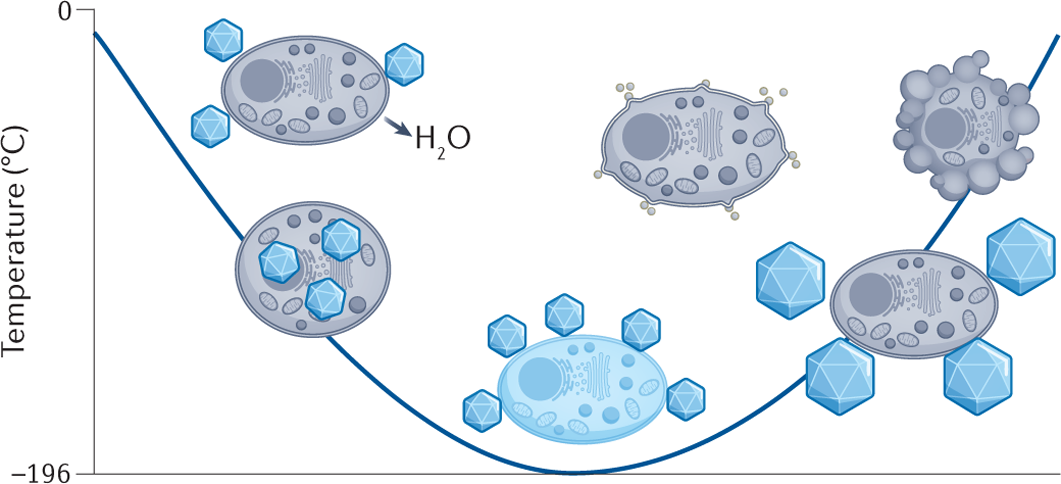Coral reefs, intricate and vibrant ecosystems thriving beneath the ocean’s surface, confront an existential peril driven by the specter of climate change. In a momentous and almost fantastical leap reminiscent of science fiction, scientists have notched a remarkable triumph – the cryopreservation and successful revival of mature coral colonies. This groundbreaking feat emerges as a beacon of hope in the escalating struggle to shield coral species from the deleterious effects wrought by global warming and the acidification of oceans, consequences intricately interwoven with human activities.
The very essence of this achievement lies in its potential to serve as a formidable tool in the arsenal against the encroaching threats to coral reefs. As climate change intensifies, these delicate marine ecosystems face unprecedented challenges, making the cryopreservation and subsequent revival of mature corals an unparalleled stride toward their conservation. The promise inherent in this scientific breakthrough resonates as a vital defense mechanism, poised to counteract the adverse impacts of a rapidly changing climate on these irreplaceable underwater wonders.
Cryopreservation Challenges and Solutions
Cryopreservation of coral larvae had shown promise in the past, but it grappled with inherent limitations. The success of this method was contingent upon the accessibility of coral larvae, a window confined to sporadic spawning events that transpire merely a few nights each year. Compounding this challenge is the adverse impact of warming seas on coral reproduction, leading to a tangible reduction in the survival rates of these larvae.
To surmount these hurdles, a visionary approach has been conceived by researchers. The proposal pivots on the idea of cryopreserving mature coral colonies, strategically chosen for their year-round availability. This shift in strategy holds pivotal significance not only due to the constant accessibility of mature colonies but also in their critical role for ecosystem restoration. If the trajectory of climate change is reversed, these mature corals could become linchpins in the revitalization of endangered reef ecosystems, providing a robust and sustainable solution to the challenges posed by a changing environment.
The Cryopreservation Experiment
In a groundbreaking endeavor, thermodynamicist Matthew Powell-Palm and his team at Texas A&M University undertook a pioneering experiment aimed at cryopreserving coral specimens. The focus of their study was on freezing pea-sized fragments of a prevalent Hawaiian finger coral known as Porites compressa. Tackling the inherent challenge of cryopreserving larger coral specimens, the researchers employed a meticulous approach.
To ensure the success of the experiment, Powell-Palm and his team utilized a combination of menthol and light, strategically deployed to eliminate any interfering microbes. This preliminary step set the stage for the subsequent cryopreservation process. The coral fragments were then meticulously sealed within metal chambers, each filled with a specialized chemical solution. This solution served a dual purpose: it facilitated partial dehydration of the corals and created an environment conducive to the preservation process. The final step involved immersing the sealed chambers, containing the coral fragments, into the frigid embrace of liquid nitrogen.
This multifaceted approach, combining precise environmental conditions and innovative techniques, marked a significant leap forward in the endeavor to cryopreserve corals. It showcased a meticulous strategy to overcome the challenges posed by larger specimens, laying the groundwork for potential advancements in the conservation and preservation of these vital marine organisms.
Vitrification Process and Preservation Potential
Exposed to approximately –200°C temperatures, the corals experienced a vitrification process where the remaining water solidified into a glassy form without forming damaging ice crystals. Powell-Palm notes that at such frigid conditions, metabolic reactions slow to an almost imperceptible pace, suggesting the potential to preserve living specimens for hundreds, if not thousands, of years.
Thawing and Recovery
After a few minutes in cryopreservation, the corals underwent a careful thawing and recovery process lasting 24 hours. Following this procedure, the researchers assessed the corals’ vitality by measuring their oxygen consumption. Astonishingly, one day after thawing, the corals showed signs of life, indicating the success of the cryopreservation and revival process.
Challenges and Future Steps
While the results are promising, marine scientist Liza Roger emphasizes that challenges persist. Several days after thawing, the corals experienced stress and succumbed to bacteria that typically coexist with them. The next crucial steps involve refining the process to ensure the long-term survival of revived coral colonies.
Optimism for the Future
Despite the challenges, Powell-Palm remains optimistic. He suggests that applying the right antibiotics could bolster the resilience of the revived coral colonies, enabling them to thrive in their new environment. This groundbreaking research opens new avenues for conservation efforts, providing hope for the preservation of coral reefs in the face of climate change.
A Milestone in Coral Conservation
The triumphant cryopreservation and subsequent revival of adult corals represent a monumental stride in the realm of coral conservation. This groundbreaking achievement, though not without its challenges, emerges as a beacon of hope, offering the potential to fortify these indispensable ecosystems for the benefit of future generations.
While the journey toward preserving coral reefs is far from over, the success in cryopreserving adult corals underscores the promising trajectory of ongoing research. This scientific breakthrough not only enriches our understanding of marine life preservation but also serves as a poignant reminder of the pressing need to address the overarching issue of climate change. The urgency to act becomes increasingly evident as coral reefs, vital barometers of environmental health, face unprecedented threats. As we celebrate this milestone, it becomes imperative to channel our collective efforts towards mitigating climate change, ensuring the sustained existence of these underwater wonders for generations yet to come.

